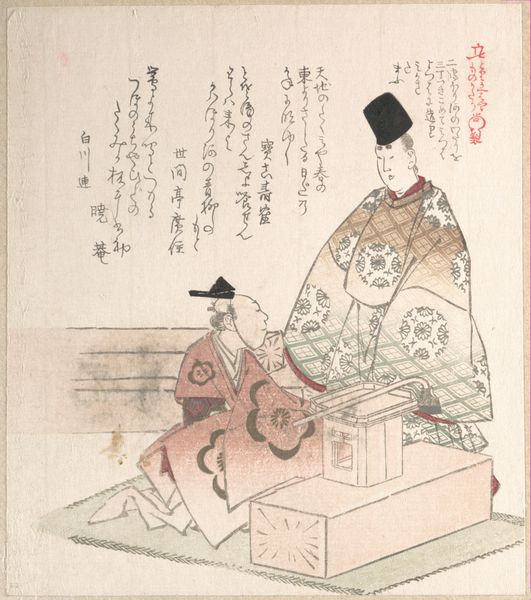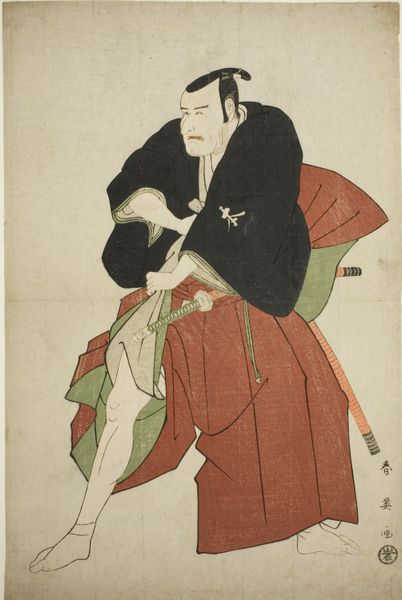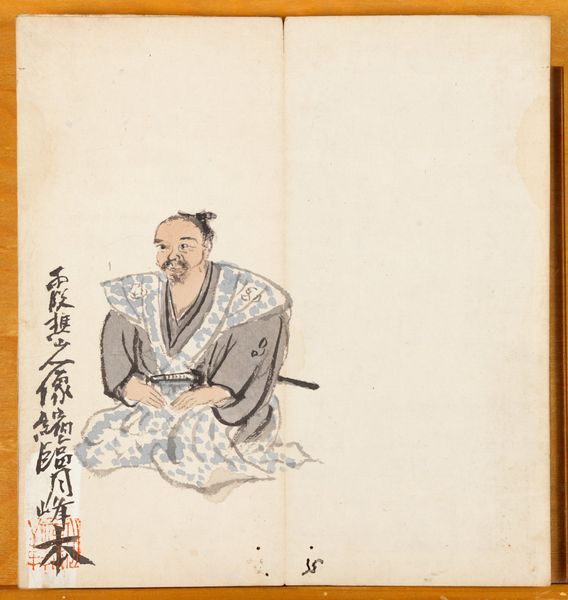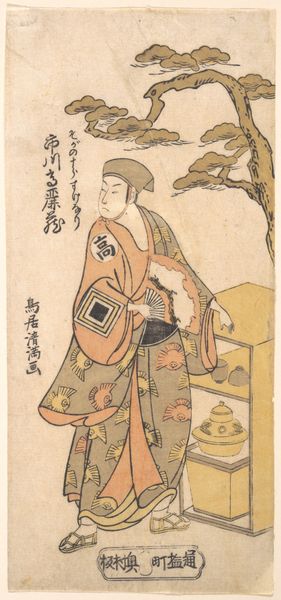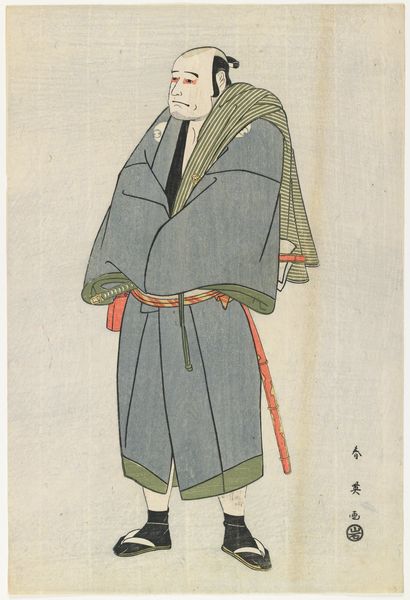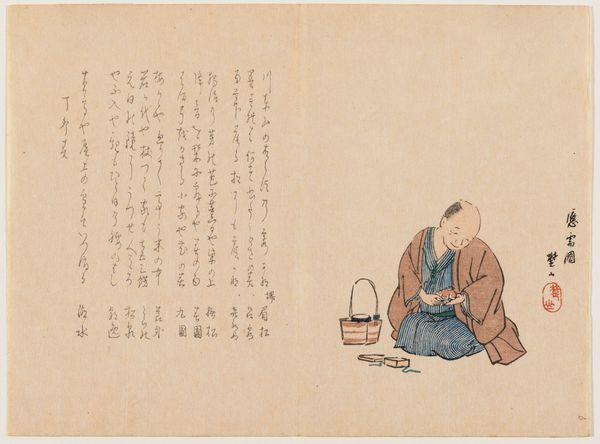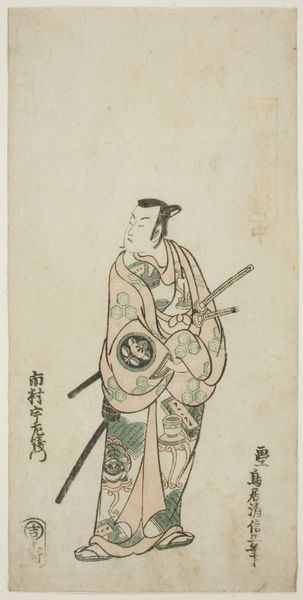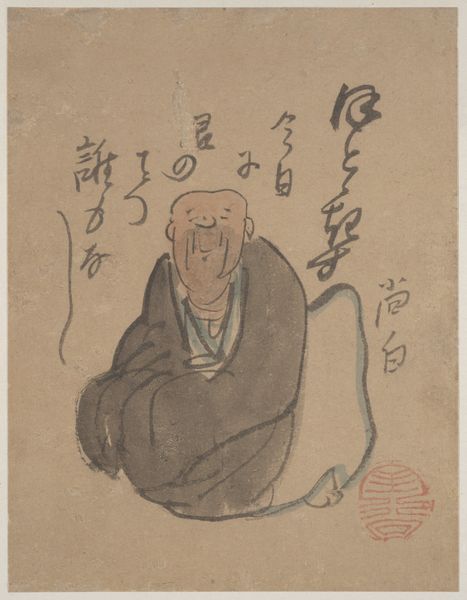
Copyright: Public domain
Curator: This is Shibata Zeshin's "Portrait of Rikyū," created around 1875 using ink. What stands out to you? Editor: A contemplative stillness. He seems almost to emanate an aura of inner peace, despite the minimal use of color, I feel the strength and solemnity of the man depicted. Curator: It is an intriguing portrayal. Rikyu, or rather, likely a depiction of a figure *in the style of* Rikyu, carries heavy symbolic weight. As a tea master, he signifies the wabi-sabi aesthetic—simplicity, imperfection, and transience. It's as if the artist tries to show not Rikyu himself but rather Rikyu as a signifier of something greater, through the semiotics of clothing and posture. Editor: Absolutely, the very act of choosing this subject places it within a context of deep cultural reverence, regardless of the artist's intentions. Even the sparseness of the drawing underscores that very principle of wabi-sabi and how ukiyo-e style has influenced portraiture. The unadorned background pushes the focus entirely on Rikyū as a subject— and the essence of tea culture, with the carrying bag serving as another key element in the staging, adding both depth and information to the portrait. I am, however, left to wonder how this portrait of an almost deified cultural figure has been influenced by the cultural and socio-economic background Zeshin found himself in at the time. Curator: Exactly. Rikyū is presented not just as an individual but as an idealized representation of artistic sensibility in a changing world. In Japan, during that time, traditional arts were facing pressures from Western influences, and a portrait like this reaffirms cultural identity. We read this portrait now, after centuries of layers of history, tradition and cultural development of these concepts! Editor: I'd argue that seeing this piece allows us to reflect on how tradition itself becomes a powerful cultural artifact. Zeshin reminds his audience of Rikyū but also emphasizes the continuous evolution of these powerful symbols. I think for the contemporary audience it becomes an active tool, rather than an artifact on display. Curator: Precisely. It encourages one to seek those traces within one's own culture, too. Editor: Absolutely, allowing us to think about how historical figures shape not only history but our present.
Comments
No comments
Be the first to comment and join the conversation on the ultimate creative platform.

